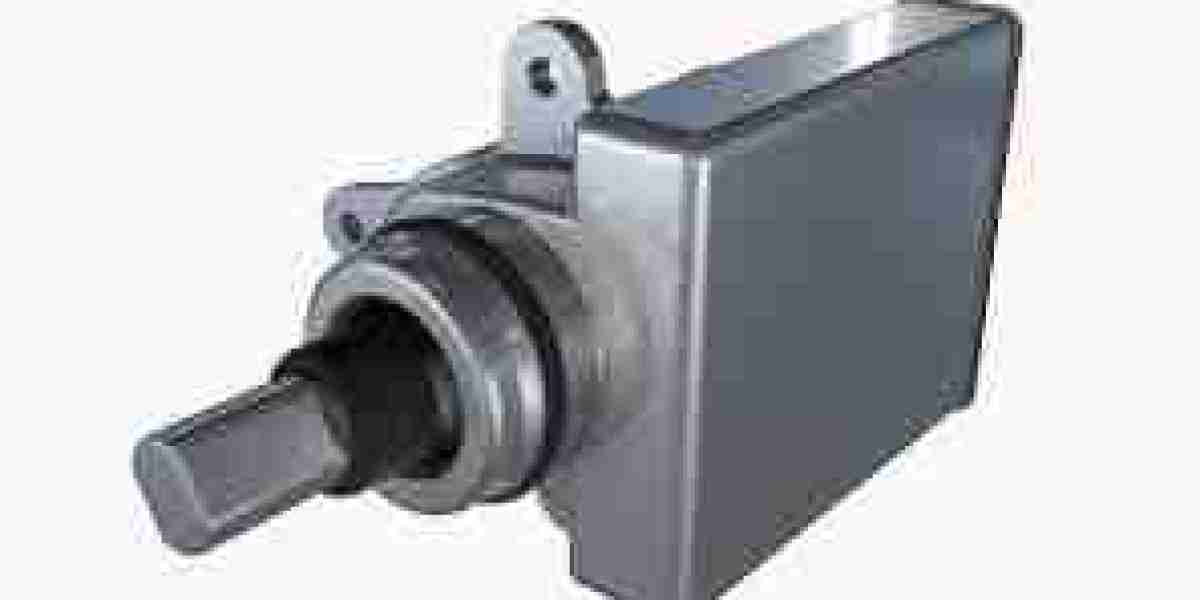The Automotive Actuator Market is rapidly evolving as vehicles become more intelligent, interconnected, and performance-driven. The integration of smart and adaptive systems into modern automobiles has transformed actuators from simple mechanical devices into complex, sensor-embedded systems critical to vehicle performance, efficiency, and safety.
Actuators are responsible for converting electrical signals into physical action—controlling components such as brakes, throttles, HVAC systems, doors, and steering mechanisms. With the growing emphasis on vehicle automation, fuel efficiency, and real-time adaptability, modern actuators must now be smarter, faster, and more reliable than ever before.
From Mechanical to Intelligent: The Evolution of Automotive Actuators
Traditionally, automotive actuators were passive, standalone units designed to perform repetitive tasks, such as moving a window or adjusting a seat. Today’s actuators, however, are embedded with sensors, microcontrollers, and connectivity features, transforming them into intelligent components capable of self-adjustment, diagnostics, and adaptive behavior based on real-time vehicle and environmental data.
This transformation has been driven by several parallel trends:
Vehicle electrification demanding precise control of electric systems.
Advanced driver assistance systems (ADAS) requiring fast, accurate responses.
Performance optimization through dynamic, real-time control of powertrain and suspension systems.
Smart Actuators in Advanced Driver Assistance Systems (ADAS)
One of the most significant drivers of smart actuator development is the rise of ADAS, which includes technologies such as adaptive cruise control, lane keeping assist, collision avoidance, and automated emergency braking.
In these systems, actuators respond to inputs from radar, LiDAR, cameras, and ultrasonic sensors to take automated actions. For example:
Brake actuators in ADAS can apply force within milliseconds if a collision is imminent.
Steering actuators adjust wheel alignment in response to lane-drift warnings.
Throttle actuators manage acceleration and deceleration based on adaptive cruise control settings.
Smart actuators in ADAS are often fail-operational, meaning they are designed with redundancy and self-check capabilities to ensure safety even in the event of partial system failure. As vehicles move toward higher levels of autonomy (SAE Level 3 and above), these intelligent actuators will become even more central to vehicle control.
Adaptive Systems Enhancing Vehicle Performance
Beyond safety, actuators are now playing a critical role in dynamically enhancing vehicle performance. These systems rely on actuators that adapt in real time to driving conditions, terrain, and driver preferences.
1. Active Suspension Systems
Modern vehicles use adaptive suspension systems where actuators control shock absorbers to improve ride quality and handling. These systems adjust damping force based on road feedback, cornering forces, and acceleration—offering comfort in city driving and firmness in sporty conditions.
2. Variable Valve Timing (VVT) and Turbochargers
In internal combustion engines, actuators are used in VVT systems to dynamically adjust valve operation for optimized power and fuel economy. Similarly, turbo actuator valves regulate exhaust flow to enhance boost pressure efficiently.
3. Drive Mode Selectors
Drive-by-wire systems use actuators to alter vehicle behavior based on the selected driving mode—comfort, sport, or off-road. These actuators adjust throttle sensitivity, steering effort, transmission mapping, and suspension settings for tailored performance.
Connectivity and Integration: The Role of IoT in Smart Actuation
The integration of Internet of Things (IoT) technologies has further elevated the capabilities of automotive actuators. Today’s smart actuators are often connected to vehicle networks (CAN, LIN, FlexRay), enabling two-way communication between ECUs and physical components.
With real-time data exchange, these actuators can:
Adjust performance based on predictive data (e.g., GPS-based suspension adjustment before road bumps).
Support over-the-air (OTA) updates to improve functionality or apply software patches.
Enable predictive maintenance by monitoring wear and usage patterns.
This connected ecosystem enhances vehicle responsiveness and contributes to improved uptime and customer satisfaction.
Key Players and Innovations
Leading automotive suppliers are investing in intelligent actuator technologies that blend mechanical performance with electronic precision.
Robert Bosch GmbH is developing smart actuators for ADAS and EVs, featuring embedded software for real-time control.
Continental AG offers motion control systems for comfort, safety, and efficiency, including active suspension and smart braking actuators.
Denso Corporation focuses on integrating thermal and powertrain actuators for hybrid and electric vehicles.
HELLA GmbH & Co. KGaA delivers electronically controlled actuators for autonomous driving modules, emphasizing compact design and low power consumption.
Emerging Trends and Future Outlook
As vehicle architectures evolve into software-defined platforms, actuators will play an increasingly strategic role. Here are the key trends shaping the future of smart and adaptive actuator systems:
AI-Powered Actuation: Use of artificial intelligence and machine learning to anticipate driver behavior and road conditions, optimizing actuator responses.
Miniaturization and Lightweight Design: Essential for EVs and compact cars to save space and improve energy efficiency.
Self-Diagnostic and Predictive Maintenance Capabilities: Reducing downtime and enhancing safety through continuous health monitoring.
Conclusion
The automotive actuator market is experiencing a transformative phase, driven by the growing sophistication of smart and adaptive systems that enhance both vehicle performance and driver safety. These actuators, no longer passive mechanical devices, are now key enablers of real-time decision-making in modern vehicles.
With the convergence of electrification, autonomy, and IoT, the next generation of actuators will not only move components—but also collect data, learn from behavior, and adapt to conditions, reshaping how we interact with and control vehicles. For automakers, suppliers, and investors, this evolution presents a dynamic landscape of innovation, competition, and opportunity.




